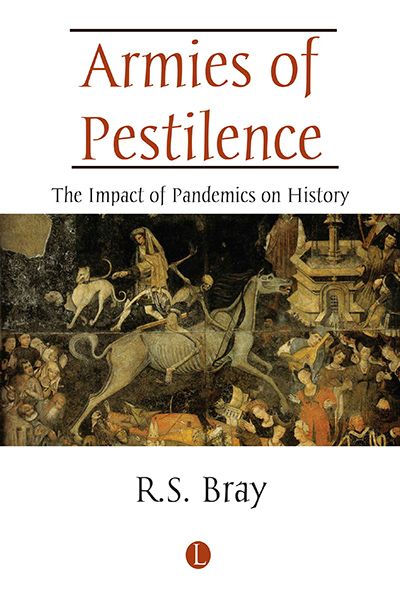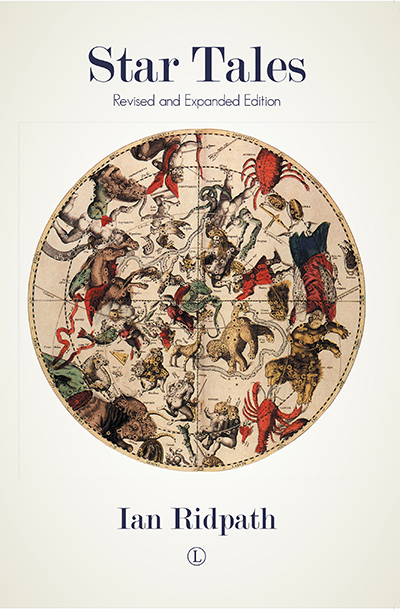Description
The global outbreak of Covid-19 appears to be unprecedented in a world which has not suffered a serious pandemic for a century, while society had almost forgotten the enormous impact of highly infectious diseases throughout history. Pestilence, however, has played a major role in ending the Golden Age of Athens, wrecking Justinian’s plans to restore the Roman Empire to its former glory, and killing untold millions in Latin America after the Spanish invasion.
Despite its importance, historians have tended to minimise the role of infectious disease, partly because of a lack of scientific knowledge. This has resulted in a distorted view both of the past and of the danger of disease to modern society. In Armies of Pestilence, R.S. Bray, a distinguished biologist and an able historian, corrects this view with an exploration of the influence of disease on history.
Newly reprinted, Armies of Pestilence surveys the principal epidemics around the world and across the centuries, including scholarly discussion around those which cannot be certainly identified. In each case, Bray examines the origins of the outbreaks, as well as the symptoms, the mortality rate and the social and economic turmoil left in their wake.
Bray pays special attention to the infamous organism that caused the Black Death, Yersina pestis, as well as other grimly familiar bogey-men of pestilential history including malaria, smallpox, typhus, cholera and influenza, and AIDS. Government responses to outbreaks are assessed, and the inability of governments to deal effectively with disease is a recurring theme. The relationship between disease and war, with the former often responsible for more deaths than the latter, is also considered in detail, as was the case during the last great influenza pandemic of 1918-19, at the end of the First World War.
About the Author
R.S. Bray was a Fellow of the Institute of Biology, an Honorary Fellow of the Society of Protozoologists and the British Society of Parasitology, and former Vice-President of the Royal Society of Tropical Medicine and Hygiene.
Contents
List of Maps
Acknowledgements
Preface
Introduction
1. Early Civilisations
2. Rome
3. Plague – Justinian’s Plague (part 1)
4. Plague – Justinian’s Plague (part 2)
5. Plague – Justinian’s Plague (part 3)
6. Plague – The Black Death (part 1)
7. Plague – The Black Death (part 2)
8. Plague – The Black Death (part 3)
9. Plague – The Bombay Plague
10. Malaria (part 1)
11. Malaria (part 2)
12. Malaria (part 3)
13. Yellow Fever
14. Smallpox (part 1)
15. Smallpox (part 2)
16. Smallpox (part 3)
17. Typhus (part 1)
18. Typhus (part 2)
19. Cholera (part 1)
20. Cholera (part 2)
21. Cholera (part 3)
22. Cholera (part 4)
23. Influenza (part 1)
24. Influenza (part 2)
Conclusion
Notes
Bibliography
Index
Endorsements and Reviews
A very pleasant surprise. Bray is both judicious and modest in his approach … and displays a genuine historical sense … What distinguishes it from many other offerings is the author’s willingness to acknowledge how difficult it is to diagnose diseases in the past … The discussion of plague is particularly interesting in the latter respect and could be read to advantage by anyone interested in the question of its dramatic appearance and equally mysterious disappearance … The question of what impact disease had on politics and society in the past is notoriously beset with traps for the unwary, and here too Bray displays a commendable caution … Can be recommended to the interested layman and – with its useful bibliography – to first year undergraduates.
Medical History
… this demonstration of Bray’s eclectic scholarship is particularly opportune … while the intention is to alert historians to the effect of disease on history, the account is equally relevant to planners of the future … in language which should not inhibit the most science-blind reader. The work of each of the historians or other commentators is critically dissected and analysed … An astonishing variety of authors has been covered; indeed, the bibliography makes almost as interesting reading as the text itself. Innumerable little snippets … add a touch of levity here and there. This fascinating, though at times gruesome account … provides innumerable topics for … debate, and is essential reading for budding historians of whatever branch or period. In addition, it is a readable, thorough account of the history of pestilence appropriate for those with more general interests.
Annals of Tropical Medicine & Parasitology






